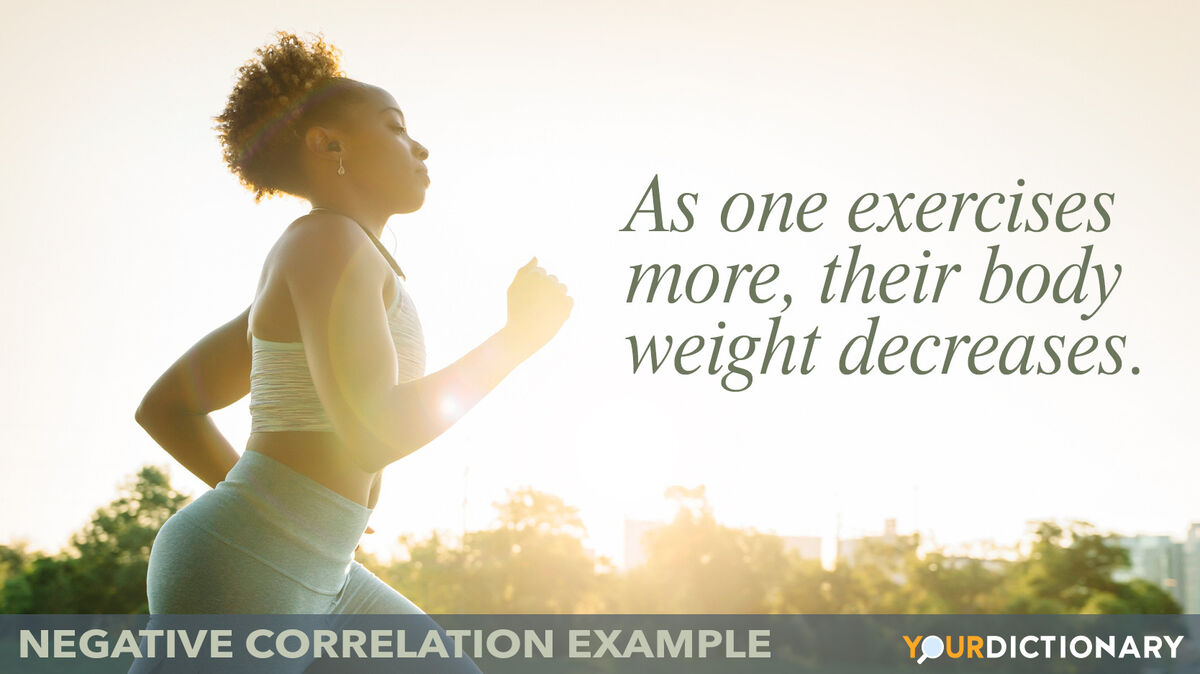
Two people or situations (known as variables) with a negative correlation have an inverse relationship, which means one increases as the other decreases. Think of school absences, for example: The higher the number of absences, the lower a student's grades will be. Although negative correlation is a common part of psychological and statistical analysis, you can also find examples of negative correlation all around you every day.
Common Examples of Negative Correlation
Not every change gives a positive result. These different examples of negative correlation show how many things in the real world react inversely.
- A student who has many absences has a decrease in grades.
- The more one works, the less free time one has.
- As one increases in age, often one's agility decreases.
- If a car decreases speed, travel time to a destination increases.
- The more time you study or prepare for a test, the fewer mistakes you'll make.
- When you spend more time brushing your teeth, you'll have fewer cavities.
- If a car tire has more air, the car may use less gas per mile.
- If a train increases speed, the length of time to get to the final point decreases.
- The more you pay off a loan, the less debt you'll be in.
- When the supply of a particular product decreases, the demand for it increases.
Negative Correlation Examples in Nutrition and Health
If you increase the nutritional value of your meals, you'll probably need fewer doctor's visits! Additional examples of negative correlation in the nutrition and health world include:
As one exercises more, their body weight decreases.
The longer someone runs, the less energy they have.
The more one smokes cigarettes, their ability to breathe deeply decreases.
As a biker’s speed increases, their time to get to the finish line decreases.
As the slope of a hill increases, the amount of speed a walker reaches may decrease.
The more one eats, the less hunger one will have.
The more one exercises, the fewer health problems they are likely to have.
Weather and Climate Examples of Negative Correlation
It's easy to measure negative correlation when it comes to the weather because an increase (or decrease) of outdoor temperature causes a lot of inverse changes. For example:
As the weather gets colder, air conditioning costs decrease.
If it is darker outside, more light is needed inside.
The warmer it is outside, the fewer layers of clothing one has to wear to be warm.
As the temperature increases, customers buy fewer hot chocolate products.
As the temperature decreases, people purchase more heaters.
As humidity increases, people's desire to be outside may decrease.
As snowfall totals increase, the number of people driving decreases.
If the temperatures outside decrease dramatically, heating bills will increase.
Negative Correlation Examples in Nature
Nature largely works in positive correlation, which is when both variables increase or decrease at the same time. For example, a plant that creates a lot of seeds has a higher chance of creating offspring. However, there are also examples of negative correlation in nature, such as:
- In areas with low amounts of rain, more wild animals migrate to other places.
- As a tadpole gets older, its tail gets smaller.
- A rosebush with many thorns will attract fewer animals who want to eat it.
- The larger a herd of animals gets, the less food there is to go around.
- When lions spend more time sleeping, they have less time to hunt during the day.
- As a tree gets more mature, it requires water less frequently.
- The older an animal gets, the fewer offspring it can have.
- When an animal's hunger increases, its self-protection decreases.
Finding Relationships in Our Everyday World
Scientists and psychologists alike study correlations between variables to determine what relationship they have. But negative correlation isn't the only type of relationship that can exist between people, situations, animals, items, or any other variable. For more, check out: